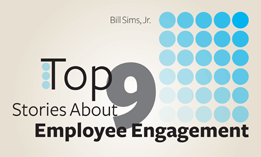Why Them? Why Not Me?
Rose works for one of the top luxury hotel firms in the world. The hotel’s reputation for service is legendary—and so was their approach to employee recognition, or so I thought, until I met Rose.
Doing a survey to assess the impact of recognition at work, I asked Rose, “So how many times have you been recognized in the three years you’ve worked here?”
“Once. I was selected as ‘Best Customer Service’ in the spa,” said Rose.
“Awesome!” I said, “What did you do to earn that award?”
“I don’t know, Mr. Sims . . . maybe it was a customer survey or something? They never told me. But the worst part for me is that they surprised me in front of all my co-workers and told them that I was the best. Now, two of the ladies won’t speak with me anymore. I wish I had never won the award.”
Sound familiar?
Rose’s story illustrates a common problem that plagues employee recognition efforts like Employee of the Month. I like to call that problem . . .
“WHY THEM? WHY NOT ME?”
In 1959, Dr. Herzberg, a renowned psychologist, discovered that recognition and achievement were the top two job satisfiers. Money came in at number six. “Big deal”, you say. “I already know that.”
What you may not know, however, is that the top two “dissatisfiers” were money and perceived favoritism by the manager.
So, by creating an environment where employees feel that management plays favorites, you create a big group of unhappy employees who are ready to leave.
Perhaps almost as bad Rose’s dilemma is the one from Martha, a customer service manager at a large trucking firm. Her 350 customer service agents had their phone conversations reviewed by the Board of Directors.
“Martha, you and your team aren’t ‘wowing’ our customers. You need to come up with a recognition or reward program to turn that around!” said the president.
Martha asked her president to define the behaviors that would create the “Wow!” experience. “We’ll get back to you on that,” her boss replied.
Martha never heard from him again. Clearly, an obtuse, vague approach to recognition creates confusion and frustration from employees who aren’t picked. New approaches like Behavior-Based Recognition fix this problem and problems like those that Rose experienced.
You can follow any responses to this entry through the RSS 2.0 feed. You can leave a response, or trackback from your own site.
